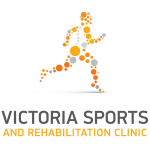With the year that we have all had, spending a lot of time working from home or helping the kids with their schoolwork and not getting to the gym, we may be a bit out of shape for some of our favourite summer physical activities. Now we can get back into it, our bodies may not be entirely ready. As we tend to also increase activity in the summer months, this is a time that we can start to see an increase in musculoskeletal injuries.
We have also found that during COVID restrictions, and with return to some normality, we have seen an increase of injuries in our patients, this is most likely due to the cumulative nature of some exercises and movements, that when we aren’t used to them, can lead to irritation and injury.
So hopefully we can give you some tips and tricks to make sure that you get the most out of your outdoor exercise this Summer!
Walking:
Walking is great for your postural strength, cardiovascular fitness (especially if inclines and stairs are involved), balance and mobility. It’s fantastic as it can be safe for all ages and injuries. However the most important factor with walking especially for long periods is appropriateness of footwear.
Summer months usually lead people to wear lighter, unsupportive footwear such as thongs and sandals. These generally lead to pes planus (flattened arches), rotation of the tibia (shin bone) and end up putting a torsion type pain through the knee and hip. The lack of cushioning through the footwear also makes more pressure go through the lower back and can lead to a lot of compressive pain and tightness.
Thongs and some sandals also can lead to over-gripping of your toes to prevent sliding of the foot which can make the plantar fascia (arch) contract and spasm and lead to a lot of pain and inflammation. My absolute favorite sandals to recommend to patients are from Bared and Frankie4. These brands are designed by podiatrists and have taken all of this into consideration with the styles. They have good arch supports, extra ankle straps to stop the shoe from sliding, extra cushioning through the forefoot and a heel support.
Thongs are extremely convenient to chuck on and off despite the complications, so if you still really want this, I would recommend supportive brands such as Archies. These styles have a built in arch support and a more contoured design to support the curves of your feet. Archies are relatively inexpensive and can be purchased online or through many allied health clinics.
Cycling:
Since COVID there has been a significant increase in purchases and the use of bikes. Cycling is great again for cardiovascular fitness, joint mobility and muscle strength as well as balance. However due to the position of the bike set up, there can be added pressure on shoulders and necks, as well as lower backs. It is extremely important to make sure that your seat is in the right position as if it is too tilted one way, the pelvis and lower back has to compensate and can cause a lot of straining. Same philosophy applies to the bar set up with pressure on the neck and shoulders. If you are experiencing pain make sure you speak to someone experienced with bike set ups and consider going to have an assessment completed.
Swimming:
Swimming in both the bay and outdoor pools has also been a very popular exercise throughout COVID restrictions. Swimming is great as it has low joint impact, however the water applies a great amount of resistance for muscular strengthening and fitness. When swimming laps in particular, make sure you alternate between different strokes to ensure that you aren’t overusing certain muscles.
It is natural for us to want to do predominantly freestyle or breaststroke as it is a generally a more comfortable position. While breaststroke and freestyle done correctly should neither bias our chest or our back, many people swim these strokes with a predominately chest bias posture. We see this posture replicated especially in desk workers that have a shoulder forward posture. If these are your preferred strokes make sure that you finish with a few laps of backstroke which helps open up through the chest and complete a chest and arm stretching routine to make sure you aren’t causing yourself to tighten through the shoulders and round further forwards.
Gym Exercise and Group Classes:
Finally we can all get back into the gym or back to those group classes we have been missing! However when you haven’t been doing that style of training in a few months it is really important to be careful, take it slow and set a plan to progress your program.
With any gym or exercise it is important to stretch beforehand and have a good warm up. If you are returning to weights please ensure that you reduce the weight that you are using for the first few weeks and progressively increase it as your strength improves. Ensure that you use the correct technique, and if you aren’t sure, place yourself near a mirror so that you can check, train with a friend or enlist the help of a personal trainer. Also make sure you have a cool down and stretch or foam roll at the end of your workout.
I hope these tips help keep you pain free during the next few months! Please remember that you can always contact us at the clinic if you have any more specific questions.
Have a lovely Christmas and New Year and we all look forward to seeing you soon!
